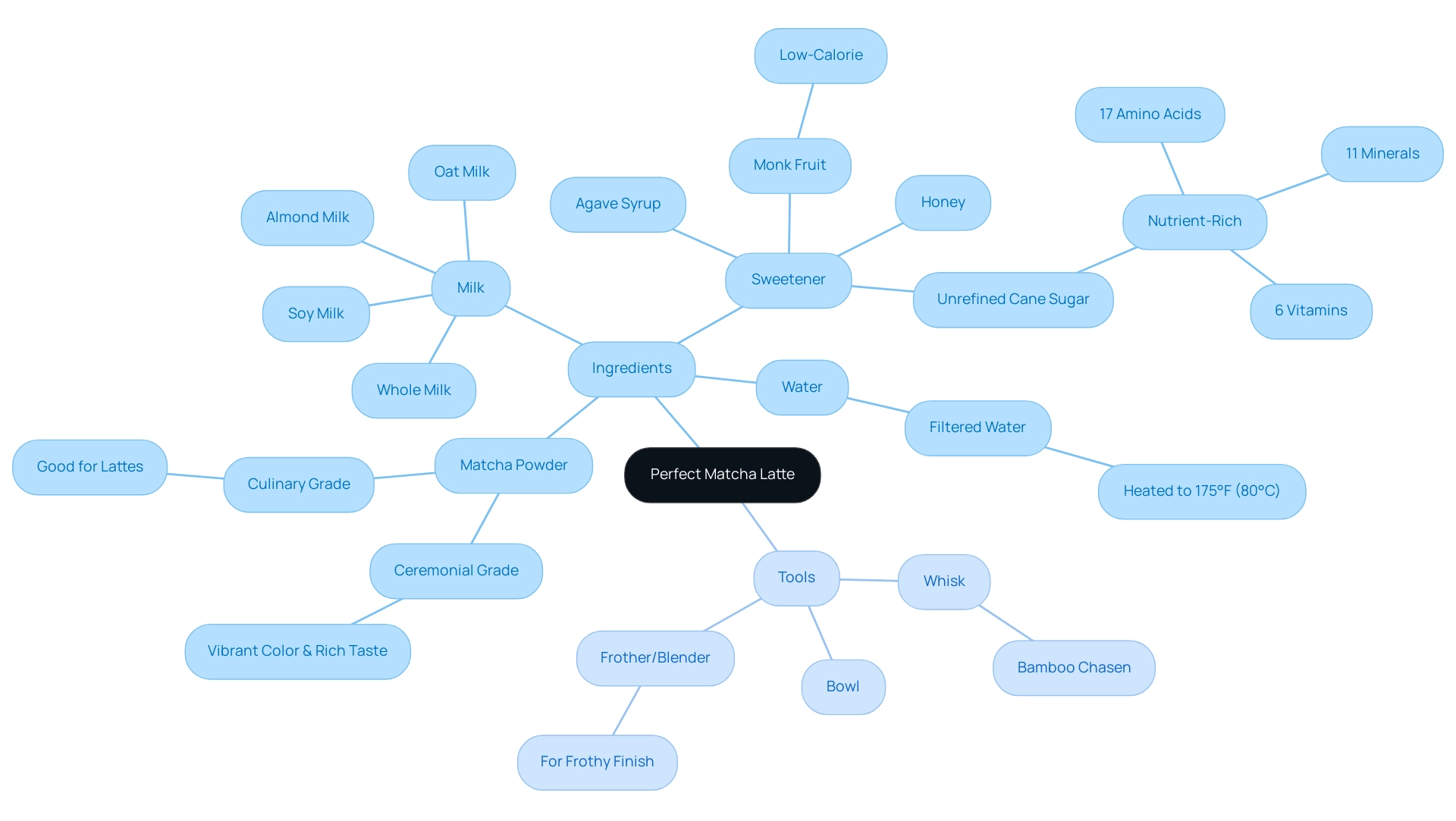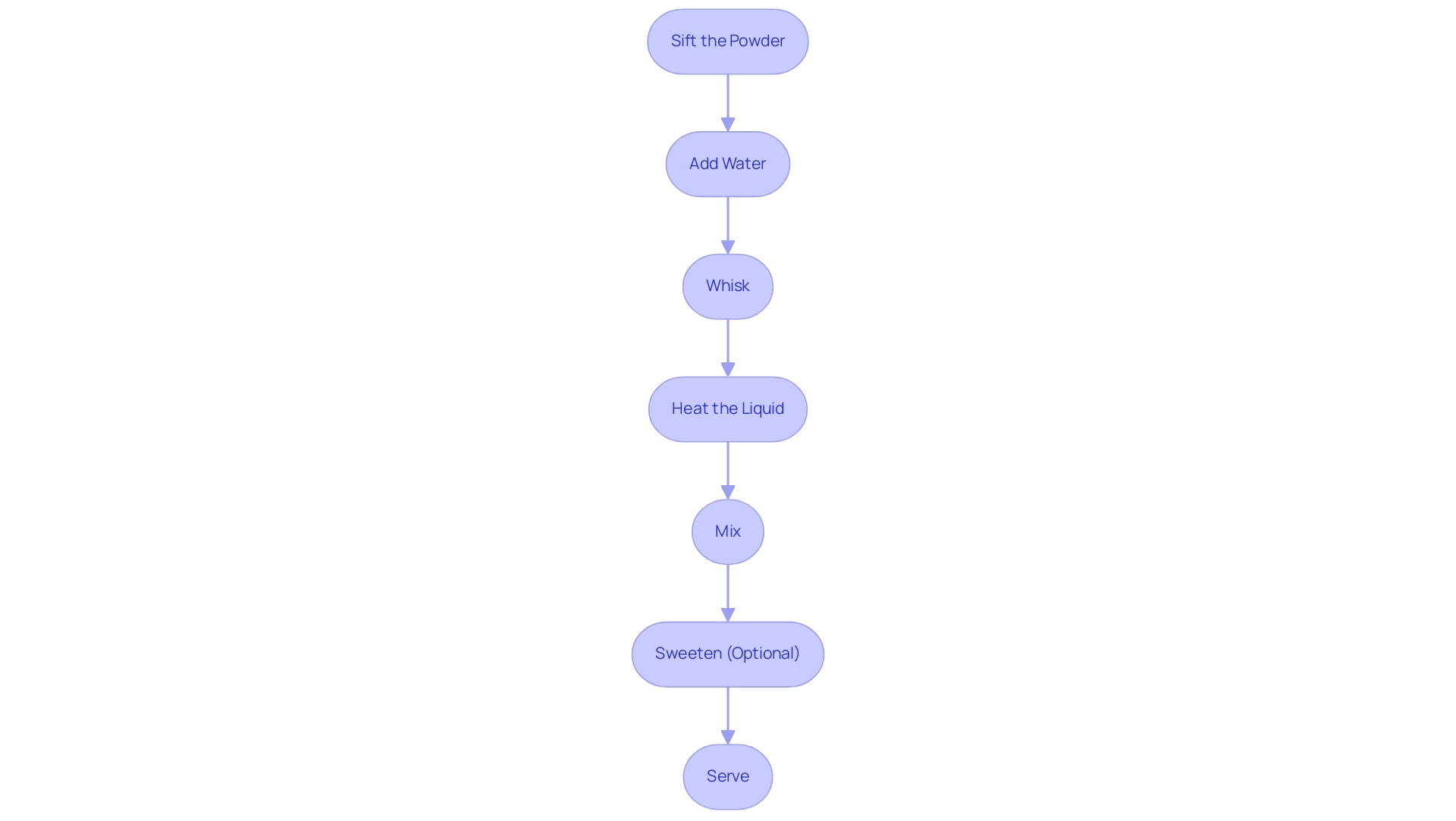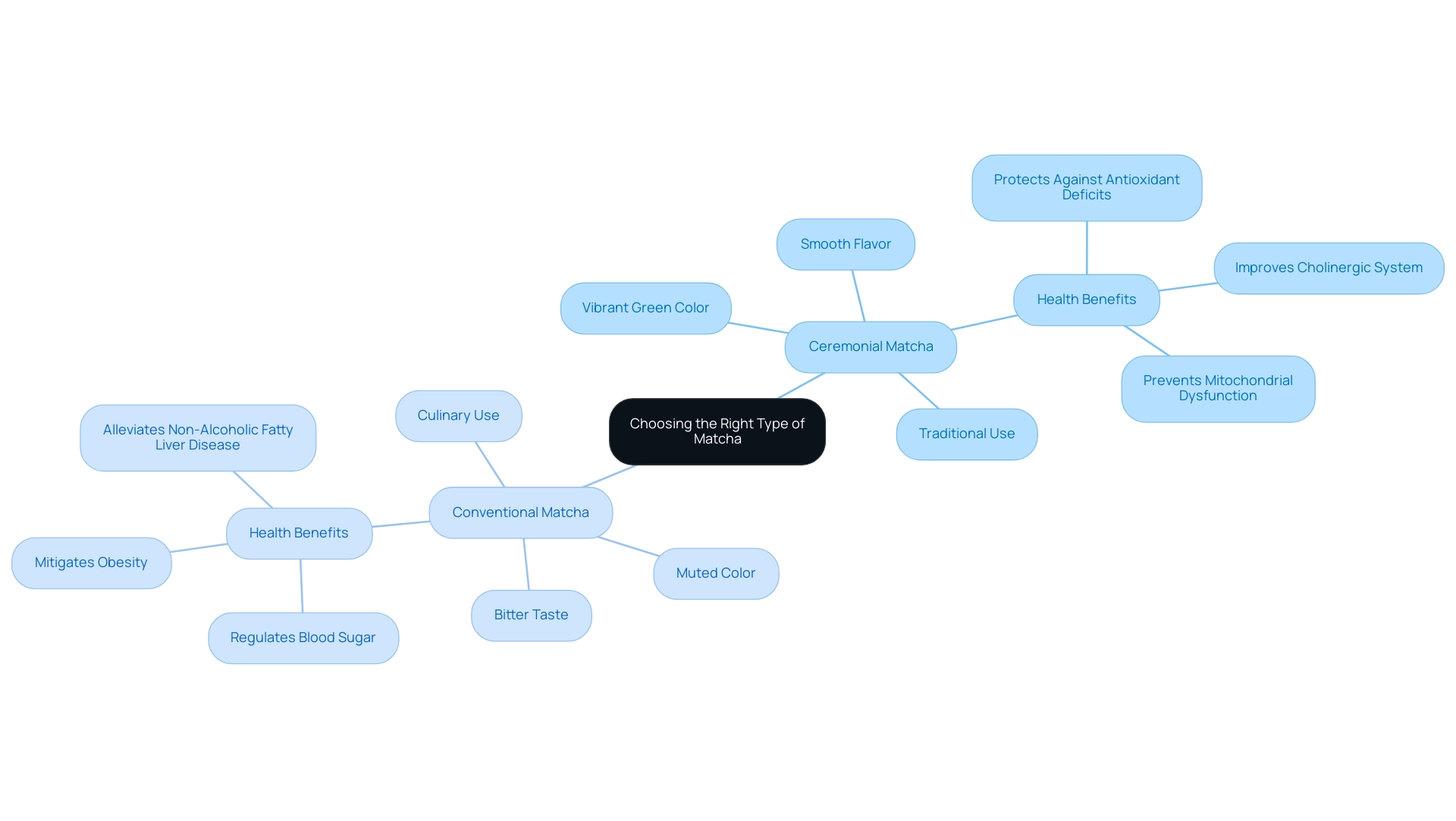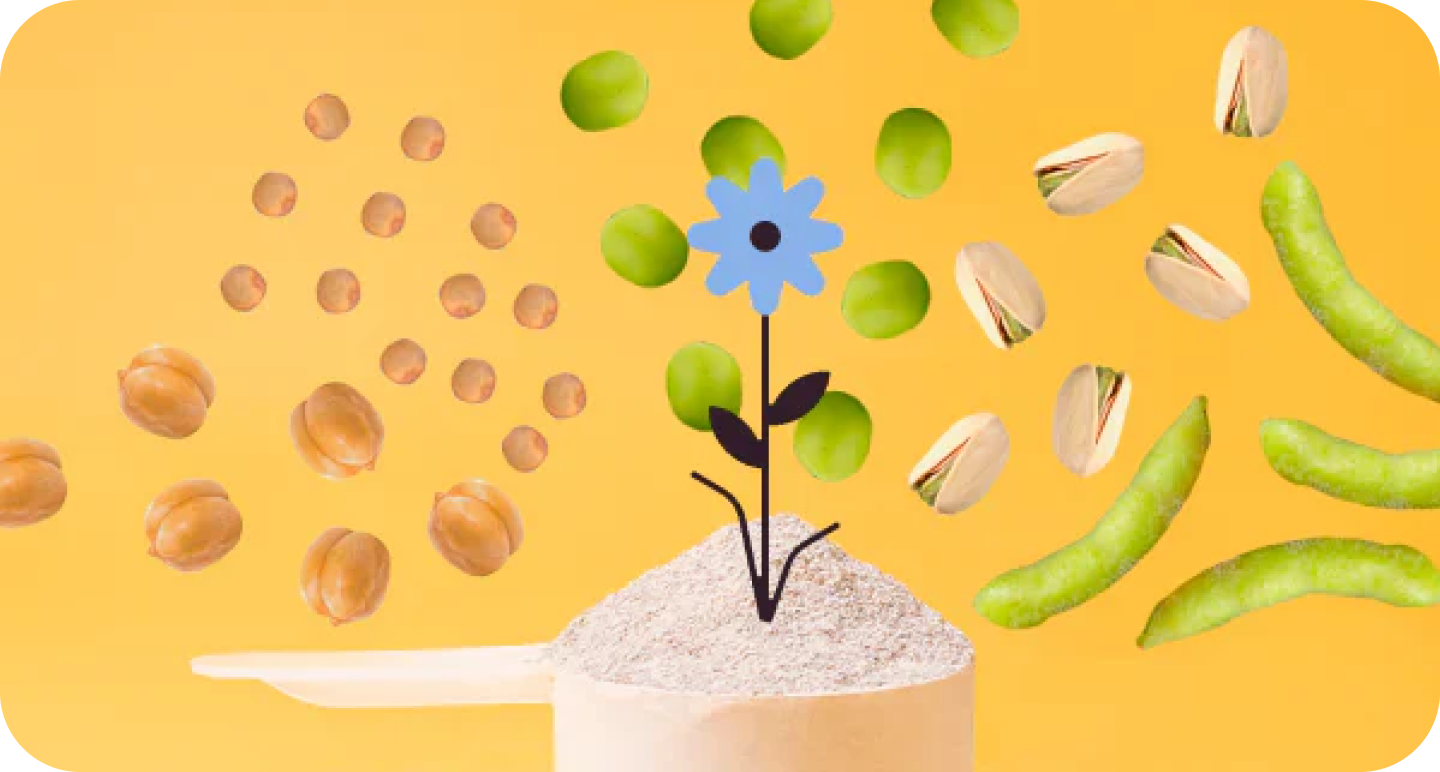Introduction
The art of crafting the perfect matcha latte transcends mere beverage preparation; it embodies a blend of tradition, health, and personal taste. As matcha continues to gain popularity among health-conscious consumers, understanding the essential ingredients and techniques is crucial for achieving that ideal cup.
From selecting high-quality matcha powder to mastering the whisking process, each step plays a vital role in enhancing flavor and maximizing the beverage's nutritional benefits. This article delves into the key components and methods for creating a matcha latte that not only satisfies the palate but also aligns with contemporary wellness trends.
Whether one is a seasoned aficionado or a curious newcomer, this guide promises to elevate the matcha experience to new heights.
1. Essential Ingredients for the Perfect Matcha Latte
To create the perfect green tea latte, it is essential to gather the following key ingredients:
-
Matcha Powder: Select high-quality, preferably organic matcha powder. Ceremonial grade is especially suggested when learning how to make the perfect matcha latte at home because of its vibrant color and rich taste profile, while culinary grade works well for lattes.
-
Milk: Choose your preferred milk type, such as whole, almond, oat, or soy milk. Each option adds unique tastes and textures to the latte, which is essential for how to make the perfect matcha latte at home, enabling personalization.
-
Sweetener: Although optional, consider incorporating honey, agave syrup, unrefined cane sugar, or monk fruit as a low-calorie, anti-inflammatory alternative to enhance the flavor of your beverage. Unrefined cane sugar retains nutrients present in cane juice, offering 17 amino acids, 11 minerals, and 6 vitamins, along with antioxidants that may help reverse oxidative damage. Monk fruit provides a sweet taste without the extra calories and is known for its anti-inflammatory properties, making it an excellent choice for plant-based nutrition.
-
Water: Utilize filtered water for the best taste, heated to approximately 175°F (80°C) to prevent burning the matcha.
- To learn how to make the perfect matcha latte at home, essential tools include a whisk (ideally a bamboo Chasen), a bowl for mixing, and a frother or blender if a frothy finish is desired.
Recent trends indicate that powdered green tea is particularly favored among Generation Z and millennials, who prioritize
health-conscious, plant-based beverages. Moreover, research highlights the nutritional benefits of powdered green tea, such as its significant quercetin content, which measures at 1.2 mg/mL, slightly higher than that found in traditional green tea (1.1 mg/mL). This emphasizes the importance of choosing high-quality green tea powder to maximize health benefits. Additionally, the presence of EGCG in green tea has been shown to have protective effects in diseases with uncontrolled immune activation (Menegazzi et al., 2020), further supporting its health-promoting properties. Lastly, leading companies in the green tea industry are concentrating on innovative product introductions and partnerships, which is indicative of the growing market demand for high-quality green tea products.
2. Step-by-Step Instructions to Craft Your Matcha Latte
To create a delightful matcha latte, follow these detailed steps:
-
Sift the powder: Begin by sifting 1-2 teaspoons of green tea powder through a fine mesh sieve into a bowl. This process helps eliminate clumps, ensuring a smooth texture.
-
Add Water: Pour approximately 2 ounces (about 50ml) of hot water (at a temperature of 175°F or 80°C) over the sifted green tea powder, which activates the flavor and color. Additionally, after whisking, add another 50ml of water to achieve the desired consistency.
-
Whisk: Using a bamboo whisk, whisk the green tea powder and water together in a zigzag motion for about 30 seconds until it becomes frothy and well blended. Proper whisking is crucial for achieving the ideal consistency when learning how to make the perfect matcha latte at home.
-
Heat the Liquid: In a separate saucepan or a frother, heat your liquid of choice until it is steaming but not boiling. This step is essential for creating a creamy texture that enhances the green tea.
-
Mix: Pour the whisked green tea into a serving cup, then gently add the warmed liquid, holding back the froth. For a frothy latte, froth the milk beforehand using a frother to achieve that desired texture.
-
Sweeten (Optional): If you find the flavor of the green tea too grassy or bitter, consider adding a sweetener of your choice. Maple syrup, honey, or even stevia can enhance the taste. As one user noted, 'Yeah, you can totally use stevia to sweeten your green tea instead of honey!' Stevia is a great choice if you’re looking for something that doesn’t add calories or sugar. Start with a small amount of stevia and adjust to your preference. This enables you to savor the energy boost from green tea while managing calorie consumption.
- To serve, follow these steps on how to make the perfect matcha latte at home, and your green tea beverage is now prepared for enjoyment! Serve it warm or pour it over ice for a refreshing beverage.
To learn how to make the perfect matcha latte at home, it is essential to consume the green tea powder within two months of opening its packaging for optimal flavor and color, as it has a limited shelf life. Additionally, using the proper tools, such as a bamboo whisk (Chasen), significantly enhances the preparation experience.
To complement your matcha latte, try our indulgent Chocolate Coconut Pea Protein Shake. In a blender, combine 1 cup coconut milk (or other dairy-free milk alternative), 2 scoops of pea protein powder, 1 tablespoon cocoa powder, and ½ cup ice cubes. Blend until smooth and pour into a glass or jar.
Top with shredded coconut flakes and/or dark chocolate chips for an extra boost of flavor! This shake is not only delicious but also filled with nutrients and plant-based protein, making it a perfect pairing for your latte.
Furthermore, green tea powder is packed full of antioxidants, making it an excellent addition to any health-conscious diet, especially when combined with pea protein! In a blender, combine 1 brewed green tea bag (room temperature), 2 scoops of pea protein powder, 1 teaspoon of green tea powder, and ½ cup ice cubes. Blend until smooth and enjoy!
You can also add in some honey or maple syrup if you prefer your shakes on the sweeter side!
3. Ceremonial vs. Conventional Matcha: Choosing the Right Type
When selecting matcha for your latte, understanding the distinctions between ceremonial and conventional matcha is essential:
-
Ceremonial Matcha: Renowned for its vibrant green color and smooth, rich flavor, ceremonial matcha is the highest quality available. It is primarily used in traditional tea ceremonies and is particularly suited for consumption straight or as a latte, making it essential for learning how to make the perfect matcha latte at home, thanks to its superior taste and enhanced health benefits. Recent studies, such as those by
Kim et al. (2021), tested dosages of 20 mg or 40 mg per kg of body weight in male BALB/c mice, indicating that this type of green tea can help protect against antioxidant deficits in various tissues, as noted by Kim et al., who stated, "The green tea group was able to protect against antioxidant deficit in pulmonary, dermal, and cerebral tissues, showed improved cholinergic system in the brain and prevented mitochondrial dysfunction."
-
Conventional Green Tea Powder: Generally utilized for culinary purposes, conventional green tea powder tends to exhibit a more muted color and may possess a slightly bitter taste. While it is typically more affordable and suitable for recipes where green tea powder is combined with other ingredients, it does not deliver the same flavor intensity or health benefits as its ceremonial counterpart. Research indicates that green tea powder supplementation can regulate blood sugar and lipids, potentially mitigating obesity induced by high-fat diets, highlighting the importance of quality in selecting this ingredient. Additionally, Zhou et al. report that high-quality green tea alleviates non-alcoholic fatty liver disease in obese mice, further emphasizing the health benefits associated with superior green tea.
For an optimal ceremonial beverage experience that maximizes both taste and nutritional benefits, knowing how to make the perfect matcha latte at home is advisable. This option not only improves the beverage's flavor but also coincides with recent discoveries that highlight the health advantages linked to premium green tea.
4. Tips and Tricks for a Perfect Matcha Latte
To enhance your green tea latte experience, consider the following essential tips and techniques, keeping in mind the diverse European green tea market and emerging trends:
-
To learn how to make the perfect matcha latte at home, experiment with the matcha-to-milk ratio to suit your taste preferences. A good starting point when considering how to make the perfect matcha latte at home is 1 teaspoon of green tea powder per cup, gradually increasing the amount according to your desired strength and intensity of flavor. This customization is particularly popular in regions like Spain, where consumer preferences are rapidly evolving.
-
To learn how to make the perfect matcha latte at home, utilize a milk frother to aerate the milk effectively before blending it with your green tea for a richer and creamier texture. This approach not only improves the texture but also produces an aesthetically pleasing beverage, in line with the increasing trend of customization.
-
Infuse Taste: If you want to learn how to make the perfect matcha latte at home, enhance your green tea latte by adding complementary tastes such as vanilla extract, a sprinkle of cinnamon, or a dash of cocoa powder. These additions can enhance the complexity of your drink, creating a more delightful experience, particularly as consumers seek innovative taste combinations.
-
Control the Temperature: Be mindful of the water temperature used in preparation when learning how to make the perfect matcha latte at home. Boiling water can scorch the matcha, resulting in a bitter taste. It is advisable to use water heated to around 175°F (80°C) for optimal taste extraction, ensuring the best quality in every cup.
Explore how to make the perfect matcha latte at home by discovering diverse taste profiles through experimenting with various dairy alternatives. Oat milk is known for its creamy texture, while almond milk contributes a pleasantly nutty flavor. Staying updated on popular trends in green tea latte customization can lead to exciting new combinations that enhance your beverage enjoyment. As the global green tea market is projected to grow at a compound annual growth rate (CAGR) of 7.9% from 2024 to 2030, embracing these trends can position you at the forefront of this evolving beverage culture.
5. Frequently Asked Questions About Matcha Lattes
Here are some frequently asked questions about matcha lattes:
- Can I use cold beverage? Yes, chilled dairy can be utilized for an iced green tea beverage. Simply whisk the green tea powder with cold water and pour it over ice before adding the milk for a refreshing drink.
- Is a green tea beverage healthy? Indeed, this green tea is exceptionally high in antioxidants, which contribute to various health benefits, including improved metabolism and enhanced cognitive function. As Adda Bjarnadottir, MS, RDN, states, "Matcha is a type of powdered green tea. It is very high in antioxidants and has numerous health benefits for your body and brain."
- How much caffeine is in a green tea latte? A standard serving of green tea powder contains approximately 70 mg of caffeine, comparable to a cup of coffee. However, this green tea provides caffeine with a slower release, promoting sustained energy levels without the jittery effects often associated with coffee. Frank Hu, a professor at Harvard T.H. Chan School of Public Health advises that while this green tea contains more caffeine than other teas, it is still less than coffee and recommends avoiding added sugars or processed ingredients.
- Can I learn how to make the perfect matcha latte at home as a vegan green tea beverage? Absolutely! You can create a delicious vegan green tea latte by using plant-based milk and a vegan sweetener, ensuring it fits within vegan dietary preferences.
- How do I store green tea powder? To maintain its freshness and flavor, store green tea powder in an airtight container in a cool, dark place. This helps preserve its potent antioxidants and overall quality. Additionally, it's worth noting that only 6 samples purchased from the international market exceeded the theanine limit of >17 mg/g, which indicates the quality and antioxidant potential of matcha.
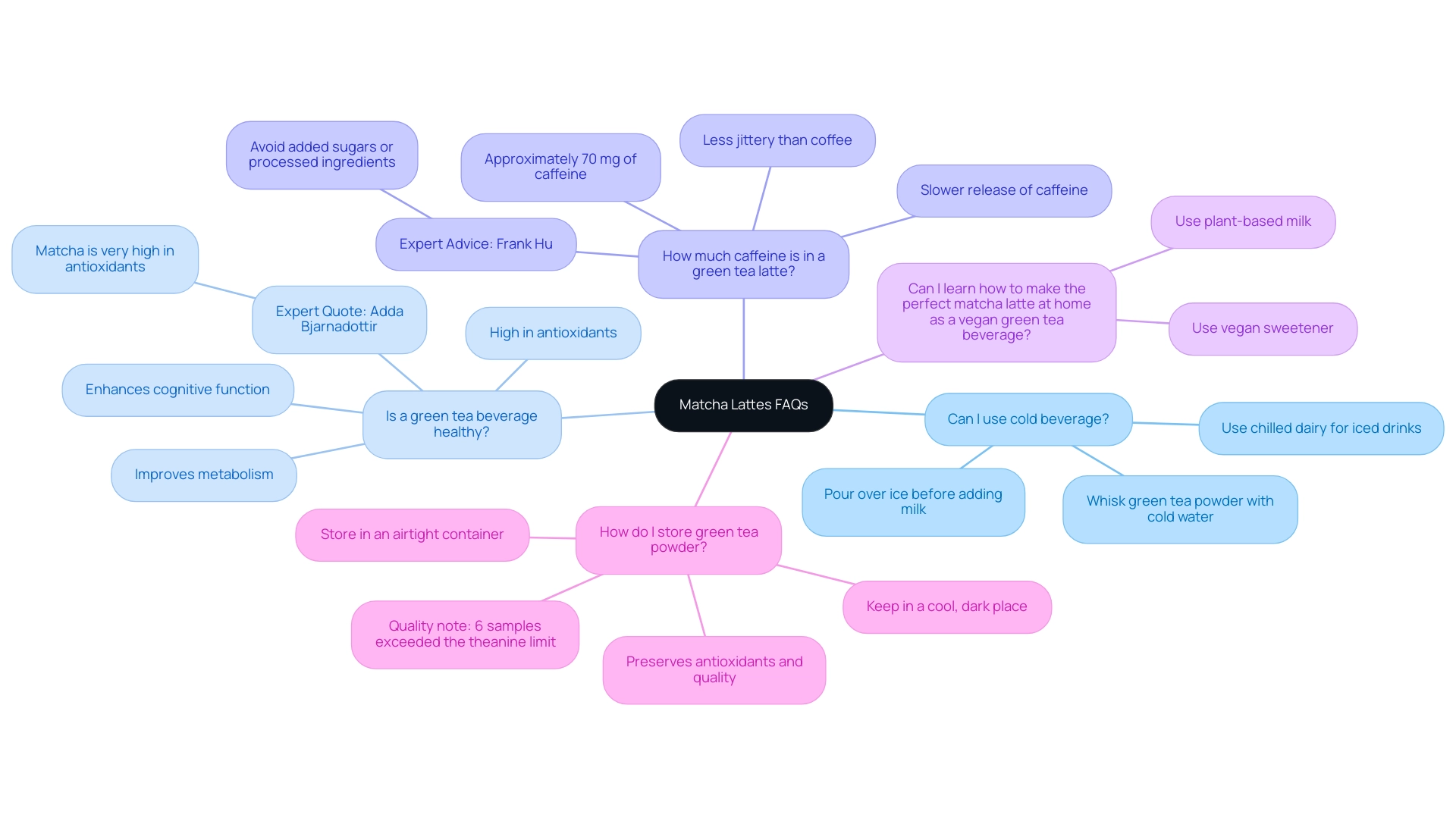
Conclusion
Conclusion
Crafting the perfect matcha latte involves a careful selection of ingredients and a precise preparation process. High-quality matcha powder, whether ceremonial or culinary grade, is essential to ensure a vibrant flavor and optimal health benefits. Personalizing the drink with various milk options and sweeteners allows for a unique experience that caters to individual taste preferences.
Following the step-by-step instructions, from sifting the matcha to whisking it to perfection, is crucial for achieving that frothy and delightful finish. Understanding the differences between ceremonial and conventional matcha further informs the choice of ingredients, emphasizing the importance of quality in enhancing both flavor and nutritional value.
Incorporating tips and tricks, such as experimenting with ratios and using a milk frother, can elevate the matcha latte experience. Additionally, exploring various flavors and maintaining proper water temperature will contribute to a more enjoyable beverage. As matcha continues to grow in popularity, embracing these practices not only satisfies the palate but also aligns with modern wellness trends.
Ultimately, the art of making a matcha latte is about more than just preparation; it’s a celebration of tradition and health. By mastering these key elements, anyone can create a matcha latte that is not only delicious but also a nourishing addition to their daily routine.
